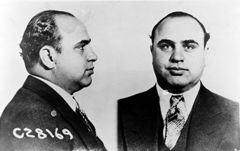Marquette Moot Court Team Success at the Leroy R. Hassell, Sr. National Constitutional Law Moot Court Competition
Please congratulate third-year law students Brittany Kachingwe and Kerri Puig, whose brief took second place at the Leroy R. Hassell, Sr. National Constitutional Law Moot Court Competition in Virginia. The team was advised by Professor Jacob Carpenter and coached by Attorneys Jennifer Severino and Joel Urmanski. Please also congratulate third-year students David Herring and Jessica Shank for their performance in the competition. They were advised by Professor Susan Bay and coached by Attorneys Nick Cerwin and Chad Wozniak. Both teams were also coached by third-year student Patrick Leigl. The competition this year included 19 teams.
The issues were 1) whether the President has the authority under the Recess Appointments Clause to make both intra- and inter-recess session appointments, and 2) whether a state action exists where a compulsory fee agreement arises under the National Labor Relations Act. The United States Supreme Court is deciding the first issue this term.

 Some of the very earliest photographs from the late 1830s are of alleged and/or convicted criminals, and law enforcement officials used photographs of criminals in Belgium as early as the 1840s to track down wrong-doers. In Paris, a clerk in the Prefecture of Police Office originated the “mug shot” as we usually imagine it — two shots side by side, with one shot being a frontal shot and the other being a profile.
Some of the very earliest photographs from the late 1830s are of alleged and/or convicted criminals, and law enforcement officials used photographs of criminals in Belgium as early as the 1840s to track down wrong-doers. In Paris, a clerk in the Prefecture of Police Office originated the “mug shot” as we usually imagine it — two shots side by side, with one shot being a frontal shot and the other being a profile.